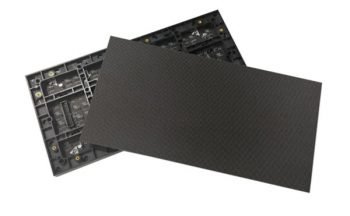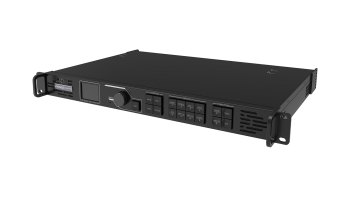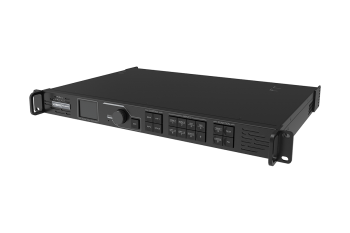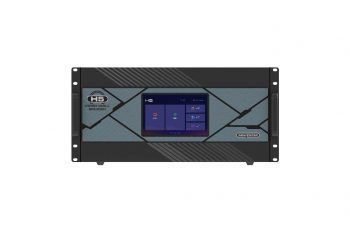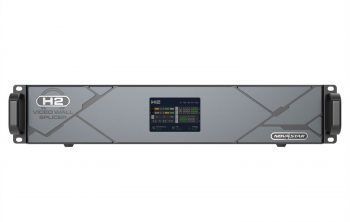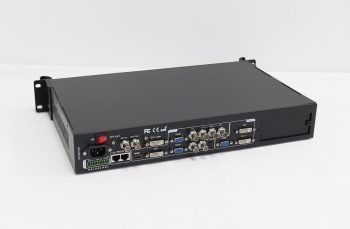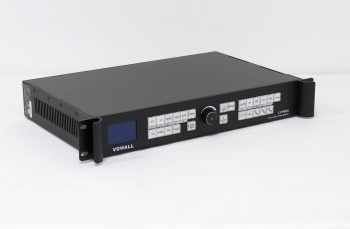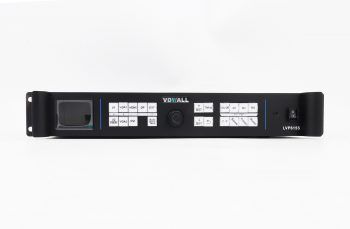Before LED display manufacturers developed small spacing LED display, it can be said that the small indoor display field, that is, the screen with an area of less than 10 square meters, belongs to the world of LCD splicing screen and DLP projection screen. With the birth of small spacing LED display, this situation has been broken. Nowadays, LED electronic large screen is more popular than LCD and DLP. You can see by comparing the three. In fact, the main reason why LCD splicing screen display market is occupied by LED electronic large screen is that there is splicing gap, which affects the overall picture beauty. Large screen splicing of more than 10 square meters can not be carried out, and it can not be used outdoors. DLP projection is gradually replaced by LED display because of low brightness, low definition and short viewing distance. The following is a brief analysis of the comparison between LED electronic large screen, LCD splicing screen and DLP projection by mini photoelectric LED display manufacturers.
Comparison of LED electronic large screen, LCD splicing screen and DLP projection
Brightness contrast: the brightness of DLP projection screen is the lowest, and the windows, doors and lights should be turned off when viewing the screen, otherwise the content played on the projector cannot be seen clearly. The brightness of LCD splicing screen can meet the needs of indoor viewing. The brightness of LED electronic large screen is relatively high for DLP and LCD, but its built-in sensor can automatically adjust the brightness of the screen according to the surrounding environment, so that the viewer can watch the picture more comfortable. Therefore, in terms of brightness, LCD splicing screen has advantages.
The contrast of the LCD screen is almost the same as that of the DLP screen, but the contrast of the LED screen is almost the same. The contrast of LED display can reach 3000:1 and 5000:1 or even higher. Therefore, when playing the picture, the light and dark, color contrast is relatively bright, and the sense of hierarchy is strong. In addition, as an auxiliary device, the video processor has higher definition and contrast.
Splicing gap: LCD splicing screen splicing out of the screen will have obvious splicing gap, generally about 1-3.5mm, affect the overall picture beauty. DLP projection splicing will also have splicing gap. The LED display uses a seamless splicing gap, so there will be no splicing gap problem. It also supports multi screen display, switching and a large picture display, zooming, stretching and other functions.
Refresh rate: the refresh rate of LCD splicing screen and DLP projection is relatively low. The refresh rate of conventional LED electronic large screen is 1920hz, while the refresh rate of small spacing LED screen can reach 3840hz or even higher. Can meet the needs of high-definition camera shooting without stripes, the image is more high-definition, the image quality is more delicate.
Resolution: 55 inch LCD splicing screen can achieve 4K high-definition resolution, laser projection in DLP projection can also be achieved, but ordinary projection can not reach the standard of 4K. The 4K resolution of LED display is to achieve point-to-point splicing. As we all know, LED display is packaged by thousands of lamp beads. Therefore, 4K resolution LED display needs 4K pixel LED lamp beads. At present, small space LED display equipped with video processor can achieve 4K high-definition display even without point-to-point 4K resolution.
Screen size: LCD splicing screen and DLP projection screen are suitable for splicing with the size less than 10 square meters. Among them, LCD splicing screen has obvious splicing gap, which affects the overall picture beauty. The LED electronic large screen can not only realize the splicing of different sizes, from less than 1 square meter to hundreds or even thousands of square meters, but also has no splicing gap. It is suitable for large-scale display applications, and the large-size LED display has better viewing effect.
Response speed: when watching video with LCD splicing screen, if some fast moving pictures are played, there will be a drag problem, and the response speed is slow. The response speed of DLP projection splicing screen is the second, although there will be drag shadow, but it is not very obvious. Earlier LED electronic large screen will also have shadowing phenomenon, but through the unremitting efforts of LED display manufacturers and driver IC manufacturers, this shadowing phenomenon has been solved. Therefore, the smaller the space is, the higher the LED electronic large screen is configured, and there will be no dragging phenomenon when watching dynamic video.
The problem of LCD splicing screen tailing is not because the reaction speed is lower than the limit of the naked eye, but because the moving elements in the picture move in the distance, resulting in delayed superposition of the picture, resulting in the phenomenon of shadowing. It also shows that the response speed of LCD splicing screen is relatively slow, but for many customers with low requirements, this defect can be ignored.
Viewing distance: the viewing distance of DLP projection and LCD splicing screen is within 1-20 meters, even less than 20 meters, which is suitable for small and medium application display places. The viewing distance of LED electronic large screen is about 3-50m or even 200m, which is suitable for large and medium-sized application scenarios. But if you watch the picture from a distance of 1 meter, the picture will have a sense of graininess. In order to solve this problem, LED display manufacturers have developed four in one mini led, micro led and COB package to solve the problem of grainy feeling in close-up viewing.
Color range: for home users, color range is not an important reference standard for LCD splicing screen, but for the field of radio and television, the requirement is relatively high. Compared with the other two, the color range of LCD splicing screen is relatively weak. The color range of LCD splicing screen and DLP splicing screen depends on the type of light source used. The color range of LED electronic large screen is a natural wide color gamut product. In terms of the three, its color range has advantages.
Color resolution: color resolution is the actual viewing experience of color range in contrast index, representing the color restoration ability of large screen display device. Although there is no quantitative measurement method for this index, the color resolution of LED display screen is significantly higher than the other two. Although the color restoration ability of DLP and LCD splicing screen is not so strong, it basically meets the needs of most users.
Price problem: in the display field of less than 10 square meters, the price of DLP projection is lower than the other two, followed by the price of LCD splicing screen, which is basically suitable for the home market. The price of LED display is higher, which is suitable for high-end applications in low-end market, as well as high-end display field. If the display area is more than 10 square meters or even hundreds of square meters, the LCD splicing screen and DLP projection can not do large area splicing due to technical problems. Therefore, in terms of large-size splicing, LED display has advantages, and the larger the area, the lower the price per unit area.

